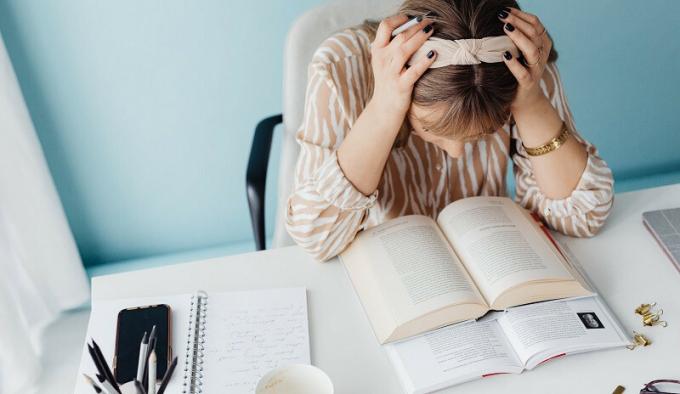8 curiosities about anxiety that help to understand this phenomenon
"Anxiety" is a term widely used in our society, but sometimes confusion may appear with other concepts or we may not know all the information related to this phenomenon.
In this article we will see some of the curiosities about anxiety most notable of this.
- Related article: "Types of Anxiety Disorders and their characteristics"
What is it like to feel anxiety?
The concept of anxiety is one of the most used in the field of Psychology, although in many circumstances it is may confuse or not be clear about the distinction with other elements such as fear, phobia, anguish or stress. The feeling of anxiety is especially related to the cognitive component and is defined as a fuzzy mix of emotions that appear at the possibility of future danger.
That is, there are different characteristics that are essential to take into account to understand anxiety as its cognitive basis, linking with emotions and cognitions and not so much with physiological responses and the appearance of fear at the possibility of a future event that may or may not take place, affecting the functionality of the subject who suffers from it and being maladaptive, thus being considered a disorder.
- You may be interested in: "Types of stress and their triggers"
Interesting Trivia About Anxiety
Anxiety is one of the most studied and researched topics in the field of Psychology and mental health; It is for this reason we have extensive knowledge about it, also taking into account that anxiety disorders are one of the most common in the population.
Here are some curiosities about anxiety that we have found interesting and of which you may not be aware.
1. Normally, the concerns we have are not met
In anxiety there is a fear of the possibility of an event in the future, that is, what we also understand as worry, fear that something bad may happen. Well, it has been seen that most of the time (with a very high percentage, close to 90%), these concerns or fears are not met or do not happen. This means that sometimes we suffer unnecessary discomfort; Our functions or activities of daily life can be affected without it really giving us positive aspects.
Thus it is shown that most of the time human beings worry about events that are very unlikely, if not impossible to happen, sometimes we even worry about events that already took place in the past and that, therefore, we can no longer do anything to fix them. These concerns are so serious that sometimes disorders develop that really affect the individual, generating great discomfort and requiring therapeutic intervention.
It is for this reason and anticipating our tendency to unnecessary worry, that when thoughts of fear or anxiety appear we must ask ourselves if this thought really makes sense or how likely it is to take place, in order to be aware of them and little by little to work and improve them.

- Related article: "Anticipatory anxiety: causes, symptoms and therapy"
2. Avoidance is not the solution
As we have advanced, we must try to be aware of the anxious thoughts that appear in our mind to be able to work them and reduce them, but it is necessary to emphasize that the way to do this is not to avoid them or try to deny them, since it has been proven that no thought or disorder disappears or diminishes if we try to avoid or inhibit itWe will only achieve that this increase and the concern or belief that the discomfort generates us is maintained.
Therefore, the correct action is to face these worries that cause us discomfort in order to be aware of them and to from their knowledge to be able to train so that these diminish or are not so dysfunctional, since only when we accept what It affects us, we can treat and improve it, only by facing our fears and concerns can we check if they are rational or not.
- You may be interested in: "Exposure Therapy With Response Prevention: What It Is And How It Is Used"
3. There are 7 types of anxiety disorders
The concept of anxiety It is divided into different categories or disorders according to what the fear or worry is due to.
Thus, on the one hand we have panic disorder that is characterized by an intense fear of presenting a panic attack, which is understood as a high fear or discomfort together with physiological activation symptoms such as tremors or sweating; the agoraphobia, which is defined as fear of being in a place where it may be difficult to escape or to receive help if you have an anxiety attack; or the specific phobia, which is an intense fear and discomfort before a specific stimulus, such as dogs.
Being also anxiety disorders we have the social anxiety disorder that is related to fear or avoidance of social situations or performances in public; and generalized anxiety disorder, which is defined as worry about different situations or events in daily life.
There are also two anxiety disorders more related to childhood: separation anxiety disorder, fear of separating from the attachment figure, such as parents; and selective mutism, which is the inability to speak in some social situations although it does in others.
- Related article: "5 Signs of Poor Mental Health You Shouldn't Ignore"
4. Women are twice as likely to suffer from anxiety
It has been seen that women are the sex most prone to anxiety, having twice as likely to develop an age disorder as men. This higher percentage in women has been observed both in the general population and in the clinical population and in all disorders, such as generalized anxiety disorder, social anxiety disorder, specific phobia, panic disorder, and agoraphobia.
It should be noted that in the clinical population (that is, subjects with a diagnosis of the disorder), the percentage of men and women who suffer from social anxiety disorder is more similar, even being observed a little higher in the mens.
5. It is common for anxiety to appear together with another disorder
Comorbidity between anxiety and another disorder is common; In other words, a high percentage of subjects who suffer from anxiety also have another mental disorder, such as depression, somatoform disorder, psychosomatic disorders, sexual dysfunctions, substance abuse disorder or even other anxiety disorders.
In this way, we check how Specific phobia is the anxiety disorder that most tends to appear as a secondary diagnosis to another disorder, but if it is presented as the main diagnosis, the subject with very low probability will present another affectation. In contrast, generalized anxiety disorder is the one that most commonly presents as the main disorder and rarely as a secondary disorder.
- You may be interested in: "The 7 most important comorbidities of social phobia"
6. Anxiety can be functional
We have learned to relate anxiety with disorder or discomfort; in society anxiety is understood as a state in which the subject sees its functionality altered. But although the conception of anxiety as a disorder is partly correct, it can also be adaptive and help the subject to function properly.
As we have already pointed out, anxiety is the anticipation of the possibility of a negative event occurring in the future; If this forecast is correct and allows the subject to act to avoid such an event, the anxiety will be acting in a functional way. It can lead to cognitions and behaviors that help the individual's survival and protect him in the face of imminent danger.
- Related article: "Work stress: causes, and how to combat it"
7. Exercising can help you reduce anxiety
Playing sports on a regular basis is healthy, generating short and long-term benefits. For example, there is an increase in endorphins, which is a type of hormone linked to reducing stress and pain, and which also allows us to feel better, and improves our lung and heart capacity.
In the same way, this practice also allows us disconnect and free ourselves from the worries of day to day, It can even help us to see the facts or events in a different way after having taken distance and to see left for a moment to think about it.
8. Anxiety usually appears at an early age
It is common for anxiety disorders to appear in childhood, adolescence and some cases during early adulthood between the ages of 20 and 40, being more likely to appear before the age of 35 years.
So we see that anxiety will develop more likely when the subject is younger; As you get older, anxiety disorders are less likely to arise if they have never occurred before.

